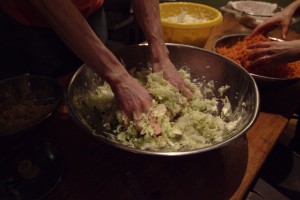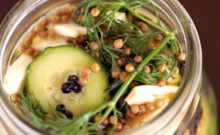Now that our vegetable gardens are getting into the full swing of production with the hot summer weather, it’s time we start thinking about how we can utilize all of the fresh, delicious produce. One of our favourite methods store and preserve excess produce is by fermentation so that we can store it for extended periods of time without refrigeration and without it going bad. In addition, fermented foods taste great and are excellent for our gastrointestinal tract, providing a plethora of probiotics and microorganisms that aid in digestion and overall health.
Generally, there are two main types of fermentation: lacto fermentation and alcoholic fermentation. Alcoholic fermentation is the process of introducing yeast (whether a cultivated or wild strain) that converts sugars into alcohol and carbon dioxide. We see this primarily in beverages like beer and wine, which are brewed in a variety of cultures around the world.
The second type is lacto fermentation, wherein the bacteria lactobacilis convert sugars into lactic acid and carbon dioxide. No alcohol is produced during lacto fermentation. We see this process most commonly in foods like sauerkraut, kimchee and pickles. Like alcoholic fermentation, we encounter lacto fermentation across a variety of cultures and in a variety of forms.
Almost any vegetable can be lacto fermented, and generally no starter culture is necessary. Some people like to use liquid whey (ex. extracted from yogurt), though natural bacteria cultures are found directly on the vegetables are also used in the fermentation. With the addition of salt, though not too much, these bacteria are allowed to multiply and speed up the fermentation process. Lacto fermentation is best done in an anaerobic environment (one without oxygen) typically with the vegetables submerged under liquid. The presence of oxygen can bring with it the potential for harmful bacteria to get into your final product
Some of our favourite fermented products into wine (why mess with a several thousand year old tradition?), lacto-fermented soda, and kimchee. If you want to learn how to create your own fermented products, we can help in a private session or in a workshop for your group or organization.

[Got a Tip?] If you have a tip to share with your fellow urban farmers, let us know at tips@youngurbanfarmers.com. Want More Tips? Browse our Tips Archive for more.






